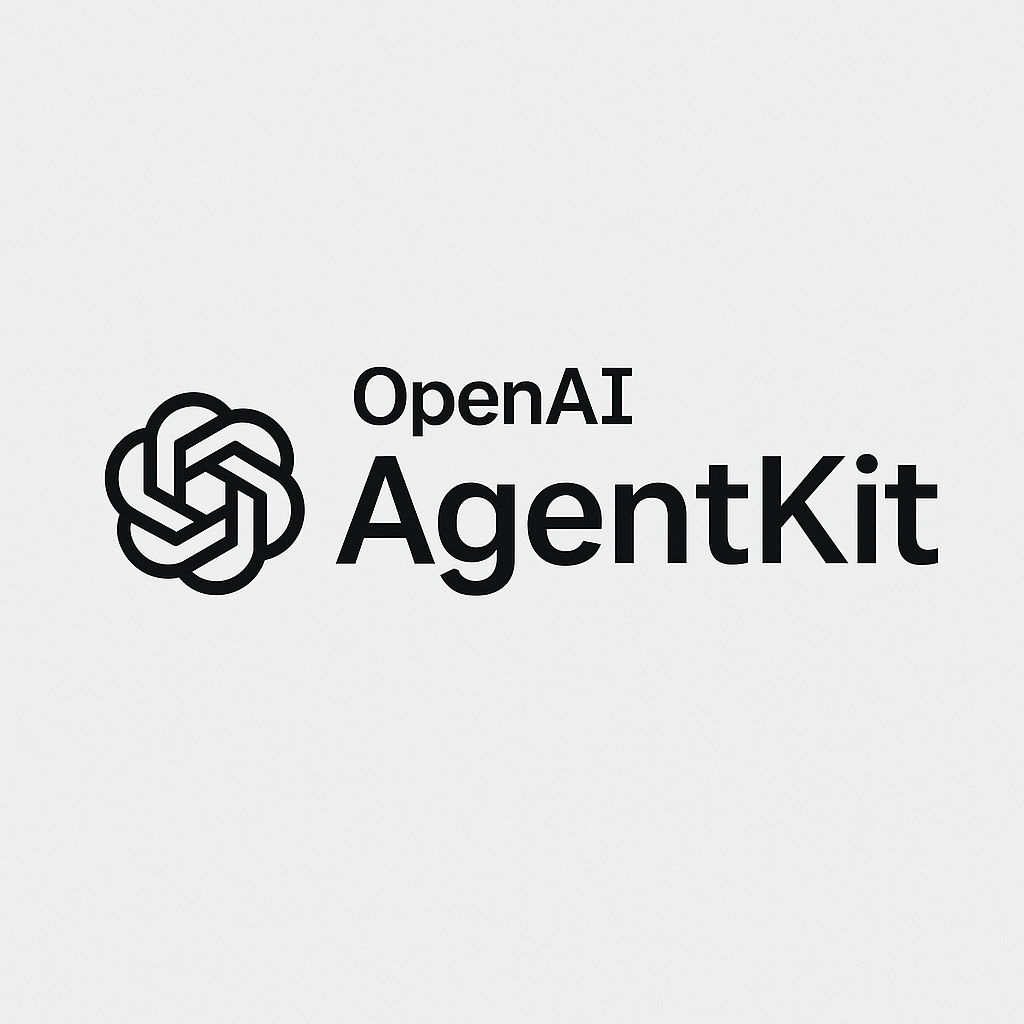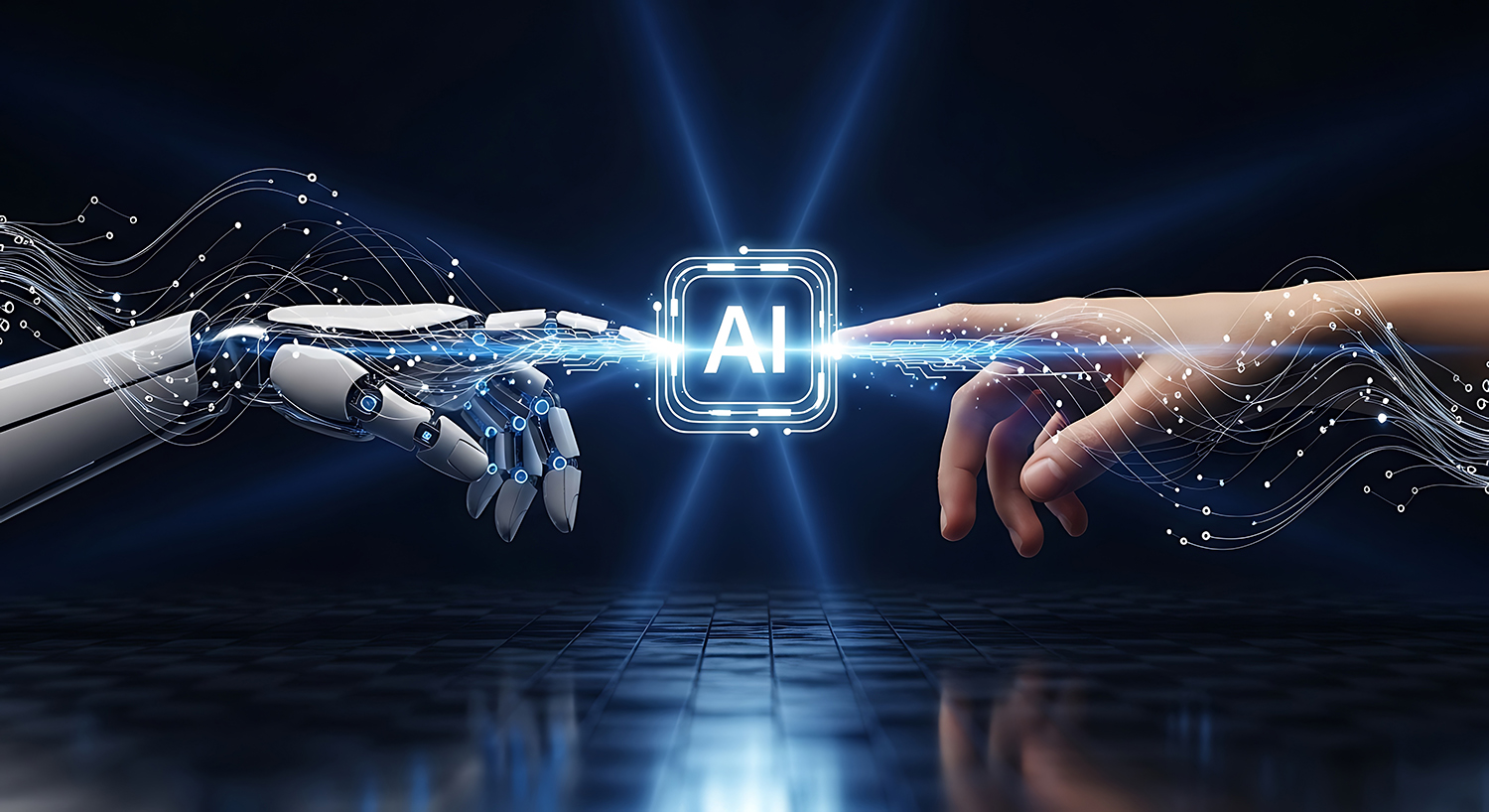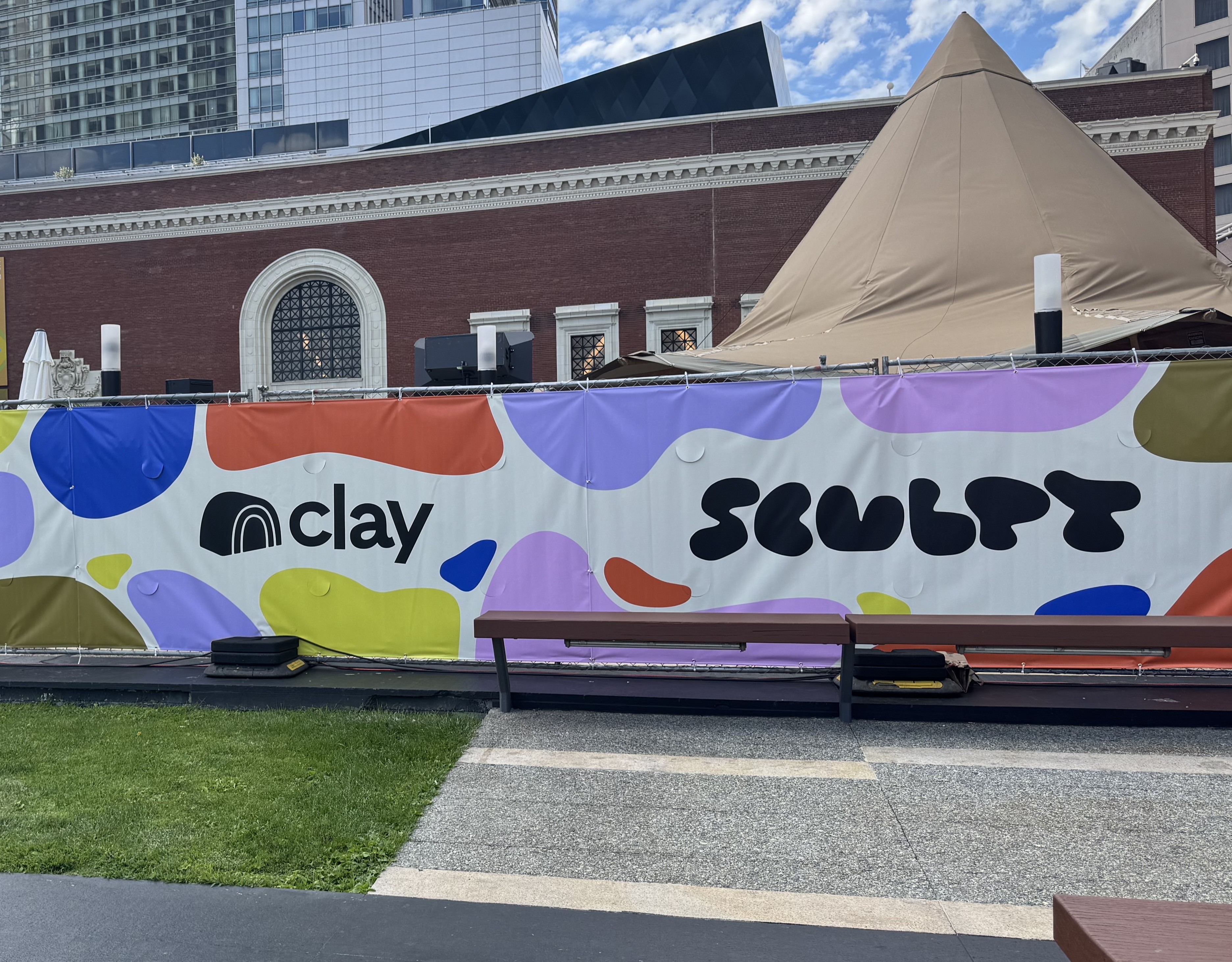OpenAI's AgentKit Proves We're at the Railroad Moment for Software
OpenAI's AgentKit launch proves AI agents are disrupting SaaS. Learn how marketing myopia explains why traditional software companies must redefine their business models or face obsolescence.

Key Takeaways
- OpenAI launched AgentKit on October 6, 2025, enabling visual no-code AI agent building
- AgentKit changes economics by making custom solutions cheaper than buying standardized software
- OpenAI controls both the LLM layer and orchestration layer, creating platform power
- Traditional SaaS companies are adding AI features instead of questioning their business model
- Theodore Levitt's 1960 "Marketing Myopia" framework predicts this disruption
- Companies must ask: are we in the software business or the customer outcome business?
- Six diagnostic questions help assess vulnerability to AI agent disruption
TL;DR
When OpenAI's engineer built a complete AI workflow and two agents live on stage in under eight minutes at DevDay on October 6, 2025, most software CEOs were asking the wrong question.
They saw AgentKit, OpenAI's new visual canvas for building AI agents without code, and wondered: how do we add AI features to compete?
This is a trap. They're about to learn what railroads learned a century ago: when you define your business by your product instead of the customer need you serve, you lose to whoever solves that need better.
Marketing Myopia: The Framework That Predicted This Moment
In 1960, Theodore Levitt published "Marketing Myopia" in Harvard Business Review. His insight: companies fail by defining their business too narrowly around their product rather than the customer need they serve.
The Railroad Example
Levitt's classic example was railroads. They declined not because people stopped needing transportation, but because executives thought they were in the railroad business instead of the transportation business. When aviation and automotive emerged, railroads couldn't respond. Their entire identity was wrapped up in tracks and locomotives, not solving the transportation problem.
Modern Examples of Marketing Myopia
The pattern has repeated across industries:
- Blockbuster vs Netflix: Blockbuster thought they were in the rental store business when they were actually in the entertainment access business. Netflix understood this and won.
- Kodak and digital cameras: Kodak thought they were in the film business when they were actually in the memory preservation business. Digital cameras killed them.
- Nokia and smartphones: Nokia thought they were in the phone business when they were actually in the mobile connectivity business. Smartphones destroyed their market position.
Now it's software's turn.
The Misunderstanding: Feature Competition vs Need Ownership
Most traditional SaaS companies are responding to the rise of AI agents by adding AI features to their existing products. A CRM company integrates AI into its CRM. A project management company adds AI to its project management workflows. This is predictable but dangerous: they're treating AI as a feature set rather than questioning whether their product category will remain relevant when customers can build custom agents.
Why This Is Marketing Myopia
This is marketing myopia. They're defending their product instead of owning the customer need.
- Salesforce isn't in the CRM software business. They're in the helping sales teams manage relationships and close deals business.
- Asana isn't in the project management software business. They're in the helping teams coordinate work and ship projects business.
- Tableau isn't in the analytics software business. They're in the helping people make better decisions with data business.
The distinction matters because AgentKit doesn't compete with your software. It competes with your customer's need for your software.
What Is OpenAI AgentKit?
OpenAI AgentKit is a suite of tools launched on October 6, 2025, designed to help developers build, deploy, and optimize AI agents. AgentKit includes:
- Agent Builder: A visual canvas for creating multi-agent workflows with drag-and-drop nodes
- ChatKit: A toolkit for embedding chat-based agent experiences
- Connector Registry: A central place to manage data and tool connections
- Evaluation capabilities: Features for measuring and improving agent performance
AgentKit Speed and Performance
According to OpenAI's announcement:
- Ramp built a buyer agent in hours that previously would have taken months
- LY Corporation built a work assistant agent in under two hours
- Ramp's iteration cycles dropped 70%, getting an agent live in two sprints rather than two quarters
- An OpenAI engineer built a complete workflow and two agents live on stage in under eight minutes
Why AgentKit Changes the Economics of Custom Solutions
AgentKit provides a visual canvas where developers compose logic with drag and drop nodes, connect tools, and configure guardrails. Users can start with prebuilt templates or build from scratch.
OpenAI's Vertical Integration Strategy
But speed is only part of the story. OpenAI now controls both critical layers: the intelligence layer (their LLM models) and the orchestration layer (AgentKit). This vertical integration gives them platform power that traditional SaaS companies can't match.
The AWS Analogy
When AWS launched, it didn't compete with individual hosting companies. It made hosting into commoditized infrastructure that anyone could use. OpenAI is doing the same for business logic. They're not trying to be the best CRM or project management tool. They're providing infrastructure that lets anyone build those solutions without traditional software.
Economic Implications for SaaS
This changes the economics fundamentally:
- OpenAI can price aggressively because they monetize the platform, not individual applications
- They can iterate quickly because they own the full stack
- They don't need to convince customers to switch from existing software—they just need to make it easier to build new solutions than to buy old ones
Traditional software sold one size fits all because building custom was expensive. You adapted your workflow to the software because that was cheaper than building your own.
Agent builder economics flip this. Building a custom agent for your specific workflow becomes cheaper than adapting to rigid software. Every customer can build exactly what they need. The speed to custom solution exceeds the speed to adopt standardized software.
Your differentiation becomes your liability.
OpenAI Understands They're Not in the Model Business
OpenAI's positioning reveals they understand Levitt's lesson. They're not selling AgentKit as better AI models. They're selling it as a platform for solving infinite customer needs.
Evidence from OpenAI Leadership
Sam Altman said during the launch: "This is all the stuff that we wished we had when we were trying to build our first agents." The framing isn't about technology capabilities. It's about removing friction from outcome delivery.
Real-World AgentKit Success Stories
The Responses API that AgentKit builds on is already used by hundreds of thousands of developers:
- Klarna: Built a support agent that handles two thirds of all customer service tickets
- Clay: Used a sales agent to achieve 10x year-over-year revenue growth
- Ramp: Reduced iteration cycles by 70% and went from concept to production in two sprints
These aren't stories about model performance. They're stories about customer outcomes.
The Pattern Is Already Playing Out
The agent infrastructure race confirms the trend:
- Google: Launched Agent Development Kit in April 2025
- Microsoft: Announced Agent Framework
- Every major platform: Moving toward democratized agent creation
What Customers Are Building with AI Agents
But the most telling signal isn't what platforms are doing. It's what customers are building. Companies are using agent builders to create solutions for problems that don't map to existing software categories:
- Procurement agents
- Compliance agents
- Research agents
- Analysis agents
They're solving their actual problems instead of adapting problems to fit available software.
When customers can build exactly what they need, category definitions become irrelevant. The question stops being "what's the best CRM" and becomes "what's the fastest way to help my sales team close deals." If an agent solves that better than traditional CRM software, the agent wins.
What This Means for Traditional Software Companies
The strategic response isn't more copilots. It's to ask a different question.
What business are you really in?
Not what product you sell. What customer outcome you enable. What job your customers hire you to do.
6 Diagnostic Questions to Assess AI Agent Vulnerability
1. What workflows involve task structure and repetition?
Six indicators help determine how easily AI agents can replace users:
- Task structure and repetition
- Risk of error
- Contextual knowledge dependency
- Data availability and structure
- Process variability and exceptions
- UI complexity
Key insight: Highly repetitive, rule-based work is the lowest-hanging fruit for agents.
Source: Bain & Company, "Will Agentic AI Disrupt SaaS?" Technology Report 2025
2. Where does your moat actually come from?
Ask yourself:
- Is it proprietary data?
- Domain expertise requiring deep judgment?
- Network effects?
- Regulatory compliance infrastructure?
Key insight: Traditional UX-based defensibility is breaking down as AI makes user experience "English-in, English-out" rather than dashboard navigation. If your moat is "our interface" or "our workflow," you're vulnerable.
Source: DuploCloud, "Why AI Killed the SaaS UX Moat," August 2025
3. Can external agents hook into your APIs and deliver the same outcome?
Some workflows are open doors where third-party agents can hook into exposed APIs and siphon value.
Key insight: If a customer can get your core outcome by having an agent call your API without using your UI, your pricing model is at risk.
Source: Bain & Company, "Will Agentic AI Disrupt SaaS?" Technology Report 2025
4. Does your workflow require deep contextual knowledge and human judgment?
Workflows that rely on human judgment are core strongholds:
- Project cost accounting
- Clinical-trial randomization
- Tasks requiring deep domain knowledge, strict oversight, and regulated data flows
Key insight: These are defensible. Simple data manipulation and report generation are not.
Source: Bain & Company, "Will Agentic AI Disrupt SaaS?" Technology Report 2025
5. Are you measuring engagement or outcomes?
If agents can generate the same output by calling a few APIs, human usage metrics lose value.
Key insight: The outcome matters, not the hours spent achieving it. If your success metrics are daily active users and time in app rather than outcomes delivered, you're measuring the wrong things.
Source: L40° Insights, "What is agentic AI, and why is it redefining SaaS Value?" 2025
6. How quickly could customers replicate your functionality?
According to Bain & Company: "In three years, any routine, rules-based digital task could move from 'human plus app' to 'AI agent plus API'."
Key question: If your software primarily orchestrates data between systems or generates reports, how long would it take a customer to build an agent that does the same thing?
Source: Bain & Company, "Will Agentic AI Disrupt SaaS?" Technology Report 2025
Strategic Framework: Which SaaS Products Are Most Vulnerable?
According to Bain & Company's framework, SaaS products fall into four categories:
AI Enhances SaaS (Low Vulnerability)
Workflows that still rely on human judgment and require deep domain knowledge. Examples: Procore's project cost accounting, Medidata's clinical-trial randomization.
Strategy: Use AI to boost productivity while protecting unique data.
Spending Compresses (Medium Vulnerability)
People still play a role, but third-party agents can hook into exposed APIs. Examples: HubSpot's list building, Monday.com's task boards.
Strategy: Launch your own agents fast, deepen partner integrations to raise switching costs.
AI Outshines SaaS (High Vulnerability)
User work can be largely automated, but SaaS workflows persist in niche areas.
Strategy: Aggressively automate user tasks, position as outcome provider.
AI Cannibalizes SaaS (Critical Vulnerability)
Both user tasks and SaaS workflows can be automated. Agents can replicate the core value proposition.
Strategy: Radical reinvention required or face obsolescence.
The Railroad Moment for Software
AgentKit isn't just another product launch. It's evidence that we're at the railroad moment for software.
Companies that think they're in the software business will lose to companies that know they're in the customer outcome business. Winners won't be determined by who has the best interface or richest feature set. They'll be determined by who solves the customer problem most effectively.
The railroads declined not because trains became obsolete, but because railroad companies defined themselves by trains instead of by transportation. Some software will survive this transition. But only the software companies that redefine themselves around outcomes instead of products.
Theodore Levitt saw this pattern 65 years ago. The technology changes, but the lesson remains: define your business by the customer need you serve, or someone else will serve that need better while you defend your product.
What business are you really in?
Frequently Asked Questions
What is OpenAI AgentKit?
OpenAI AgentKit is a suite of tools launched on October 6, 2025, that helps developers build, deploy, and optimize AI agents. It includes Agent Builder (visual workflow canvas), ChatKit (embedding toolkit), Connector Registry (data management), and evaluation capabilities.
How fast can you build an AI agent with AgentKit?
According to OpenAI's DevDay demonstration, an engineer built a complete AI workflow and two agents live on stage in under eight minutes. Enterprise examples include Ramp building a buyer agent in hours (instead of months) and LY Corporation creating a work assistant in under two hours.
What is marketing myopia?
Marketing myopia is a concept introduced by Theodore Levitt in 1960. It describes when companies fail by defining their business too narrowly around their product rather than the customer need they serve. Classic example: railroads thinking they were in the railroad business instead of the transportation business.
Will AI agents replace SaaS software?
Not all SaaS will be replaced. According to Bain & Company's framework, products requiring deep domain knowledge, human judgment, and regulated data flows remain defensible. However, products built primarily on repetitive tasks, data orchestration, or rigid workflows are highly vulnerable to AI agent disruption.
How can SaaS companies compete with AI agents?
Companies should focus on customer outcomes rather than software features. Key strategies include: protecting proprietary data, requiring deep contextual knowledge, measuring outcomes instead of engagement, and asking "what business are we really in?"
What is OpenAI's vertical integration strategy?
OpenAI now controls both the intelligence layer (LLM models) and the orchestration layer (AgentKit). This vertical integration gives them platform power similar to AWS—they're commoditizing business logic infrastructure rather than competing in specific software categories.
Related Topics and Further Reading
- AI agents and automation: How agentic AI differs from traditional chatbots
- SaaS business models: Evolution of software-as-a-service pricing
- Platform economics: Why vertical integration creates competitive advantage
- Jobs to be done framework: Understanding customer needs vs product features
- Digital transformation: How technology disrupts established industries
Primary Sources
- OpenAI AgentKit announcement: https://openai.com/index/introducing-agentkit/
- TechCrunch AgentKit coverage: https://techcrunch.com/2025/10/06/openai-launches-agentkit-to-help-developers-build-and-ship-ai-agents/
- VentureBeat AgentKit analysis: https://venturebeat.com/ai/openai-unveils-agentkit-that-lets-developers-drag-and-drop-to-build-ai
- Theodore Levitt, "Marketing Myopia," Harvard Business Review, 1960
- Bain & Company, "Will Agentic AI Disrupt SaaS?" Technology Report 2025: https://www.bain.com/insights/will-agentic-ai-disrupt-saas-technology-report-2025/
- DuploCloud, "Why AI Killed the SaaS UX Moat," August 2025: https://duplocloud.com/blog/why-ai-killed-the-saas-ux-moat/
- L40° Insights, "What is agentic AI, and why is it redefining SaaS Value?" 2025: https://www.l40.com/insights/ai-agents-vs-saas
Related Blogs Post

OpenAI AgentKit Just Reset AI GTM
OpenAI's AgentKit announcement on October 6, 2025 changed the conversation from "Can AI improve GTM?" to "How fast can you ship production agents?"

From AI Tool Sprawl to Strategic Networks: A Schön-Inspired GTM Framework
Despite 70% AI adoption in GTM workflows, companies struggle with conversions. This framework shows how to move from isolated AI tools to interconnected systems that deliver measurable results.

Power Your AI GTM Strategy by Recording Customer Phone Calls
To build an effective AI-driven Go-To-Market (GTM) strategy, start by recording customer calls.

AI Agent Strategy: Your Guide to GTM Excellence
The go-to-market landscape has fundamentally shifted. Today's top-performing organizations are leveraging AI agents to create competitive advantages, achieving outcomes to impact time savings per rep, increasing account coverage, and pipeline.

Signal-Based GTM: Key Insights from Clay's Sculpt 2025 in San Francisco
The AI hype in sales is settling into practical results. Companies are saving reps 10+ hours per week, hitting 72% account coverage instead of 19%, and building entirely new roles to make it happen.



